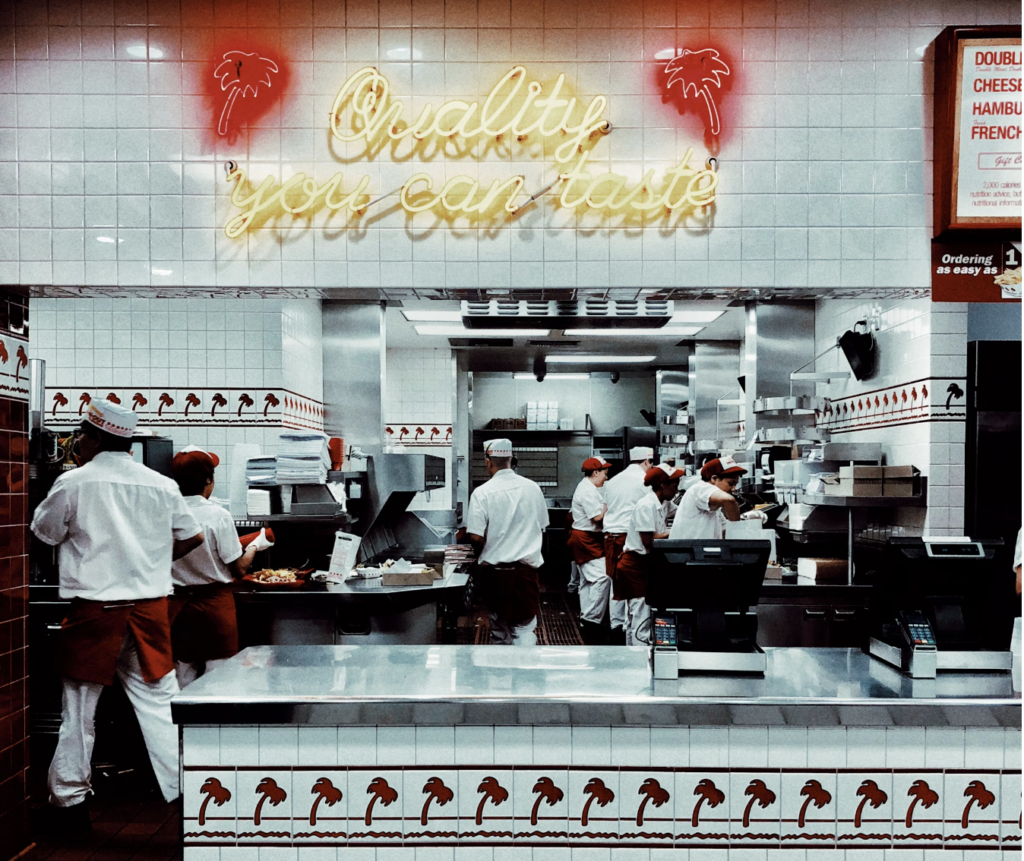We’ve seen many establishments struggle when faced with a surge in customer volume. Whether it’s due to a seasonal rush, a popular new dish, or successful marketing efforts, handling increased volume efficiently is crucial. Streamlining operations not only enhances customer satisfaction but also ensures your team can manage the workload effectively.
The first step in streamlining operations is to take a close look at your current workflows. Observe your team during peak hours and identify any bottlenecks or inefficiencies. Are there tasks that can be combined or eliminated? Can certain processes be sped up with better tools or technology?
Once you’ve identified areas for improvement, refine your workflows. Create standard operating procedures (SOPs) for common tasks to ensure consistency and efficiency. Clear, documented procedures help your team know exactly what to do and how to do it, reducing confusion and errors during busy times. And yes, we can write those for you!
Technology can be a game-changer when it comes to optimizing efficiency. Consider investing in a robust point-of-sale (POS) system that integrates with your kitchen display systems (KDS) and inventory management software. A good POS system can streamline order taking, reduce wait times, and provide valuable data on sales trends and inventory levels.
Additionally, explore options for online reservations and ordering systems. These technologies can help manage customer flow and reduce the strain on your front-of-house staff, allowing them to focus on delivering excellent service.
We are currently developing an innovative AI-driven quality control system that promises to revolutionize food quality management, called AEyeCheck. It is currently in beta testing and leverages machine learning to analyze photos and data for each dish, ensuring consistent standards for food quality, temperature, portioning, and presentation. If you’re interested in beta-testing AEyeCheck, please email [email protected]. Read our hot restaurant tech article for more ideas here.
Well-trained staff are essential for handling increased volume efficiently. Regular training sessions can help your team stay sharp and adapt to new workflows and technologies. Focus on cross-training your staff so they can handle multiple roles as needed. This flexibility is invaluable during peak times when everyone needs to pitch in wherever they’re most needed.
Encourage a culture of continuous improvement and learning. Regularly solicit feedback from your team on what’s working and what isn’t, and be open to making adjustments based on their insights. Read our blog on Leadership tips from the WPO here.
Your menu can significantly impact your restaurant’s efficiency. Simplify your menu by focusing on a few standout dishes that you can execute exceptionally well. This reduces the complexity of kitchen operations and helps maintain consistent quality.
Consider designing your menu with efficiency in mind. Group similar items together to streamline preparation and ensure that popular dishes are easy to produce quickly. Seasonal and limited-time offerings can also help keep the menu fresh without overwhelming your kitchen staff. Dive deeper with our blog on menu engineering here.
Effective inventory management is crucial for handling increased volume. Regularly track inventory levels and use data from your POS system to forecast demand. This helps prevent shortages and overstocking, both of which can disrupt operations and increase costs.
Implement a just-in-time inventory system to ensure you have the right amount of stock when you need it. This reduces waste and ensures that ingredients are fresh, which is essential for maintaining quality during busy periods. We recommend standardizing checklists for this process. We have standardized checklists and customizable forms in our digital task management system.
Clear and efficient communication is vital in a busy restaurant environment. Use technology like kitchen display systems (KDS) and mobile apps like Slack to facilitate real-time communication between front-of-house and back-of-house staff. This ensures that orders are processed accurately and quickly and that there is a clear communication and feedback channel between leadership and the whole team.
Regular team meetings before shifts can help set the tone for the day and ensure everyone is on the same page. Use these meetings to review daily specials, expected volume, and any changes to procedures.
Finally, continually monitor your operations and be prepared to make adjustments as needed. Use data from your POS and task management system to identify trends and areas for improvement. Regularly review your workflows, technology, staff training, menu design, and inventory management practices to ensure they remain aligned with your goals.
Be proactive in seeking feedback from your team and customers. Their insights can provide valuable information on how to further streamline operations and enhance efficiency. We offer some of the most sophisticated Mystery shopping with customizable evaluation points and a digital means of tracking progress. This is a great way to determine if things are going smoothly from an unbiased perspective.







